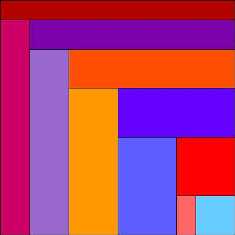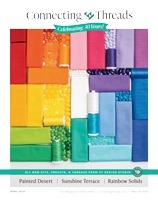Intro to the Log Cabin block
by Karen Johnson
Intro to the Log Cabin block - popular in the mid to late 1800's, the most traditional block has a red center square. Why a red square? I've seen many variations to this answer. Some say the red represents Heart and Hearth. Others say the red center is the Heart and the "logs" represent the Home. I've also heard from verbal stories the entire block is Hearth and Home, red representing the fire in the Hearth, and the "logs" representing the Home. All have the same feel though, this is a heartwarming and simple block that is much loved by quilters for generations.
The four most common block variations are: traditional Log Cabin, Courthouse Steps, Chevron (or Half Log Cabin) and my favorite, the Pineapple. Each variation has a consistent theme - a starting square with logs or rectangle strips that are built around the square. What makes the Log Cabin block, in any of it's variations, are the color play between light and dark fabrics. The light and dark can be carefully planned, or become an excellent use for scrap fabrics.
The traditional Log Cabin block can have as many or as few logs as you like. All begin with a square, and the traditional version uses all the same size logs. The logs appear to rotate around the center square, creating visual interest with color. The traditional block includes light colored fabrics on one half of the block and dark colors on the other. But there are literally hundreds of possible color variations!
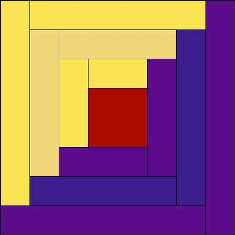
Here are less traditional versions of the same block, but with varying widths of the log.
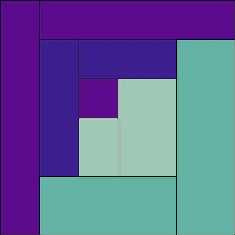
Courthouse Steps - in this variation, you still start with a square, but the logs are stacked on opposite sides of the center square instead of spiraling around them. This is a slightly less flexible version, but you can still add as many or as few logs as you like, and the color variations are endless.
Chevron, also known as the Quarter Log Cabin. Again beginning with a center square, however this time the beginning square, or the Hearth, is located in one corner of the block, instead of the center. Just like the traditional Log Cabin block, the logs are then spiraled around the center, but this time on only two sides. Generally in this version, the half light / half dark rule is ignored.
Chevron shown here shown with traditional size logs on the left and varying widths on the right.
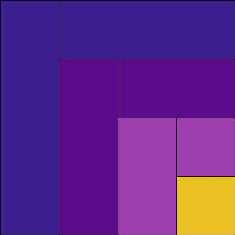
Here's my favorite, the Pineapple Block. In this case, we still begin with a center square, but we are no longer using rectangles. Instead, the rectangle is cut off, giving the illusion of a repeating square in a square. Again, the color play possibilities with this block are endless!
Pineapple Block shown in the traditional style on the left, along with a varying width's "wonky" version on the right.

For a comprehensive history of the Log Cabin Block, read Jane Hall's article, from womenfolk.com.




